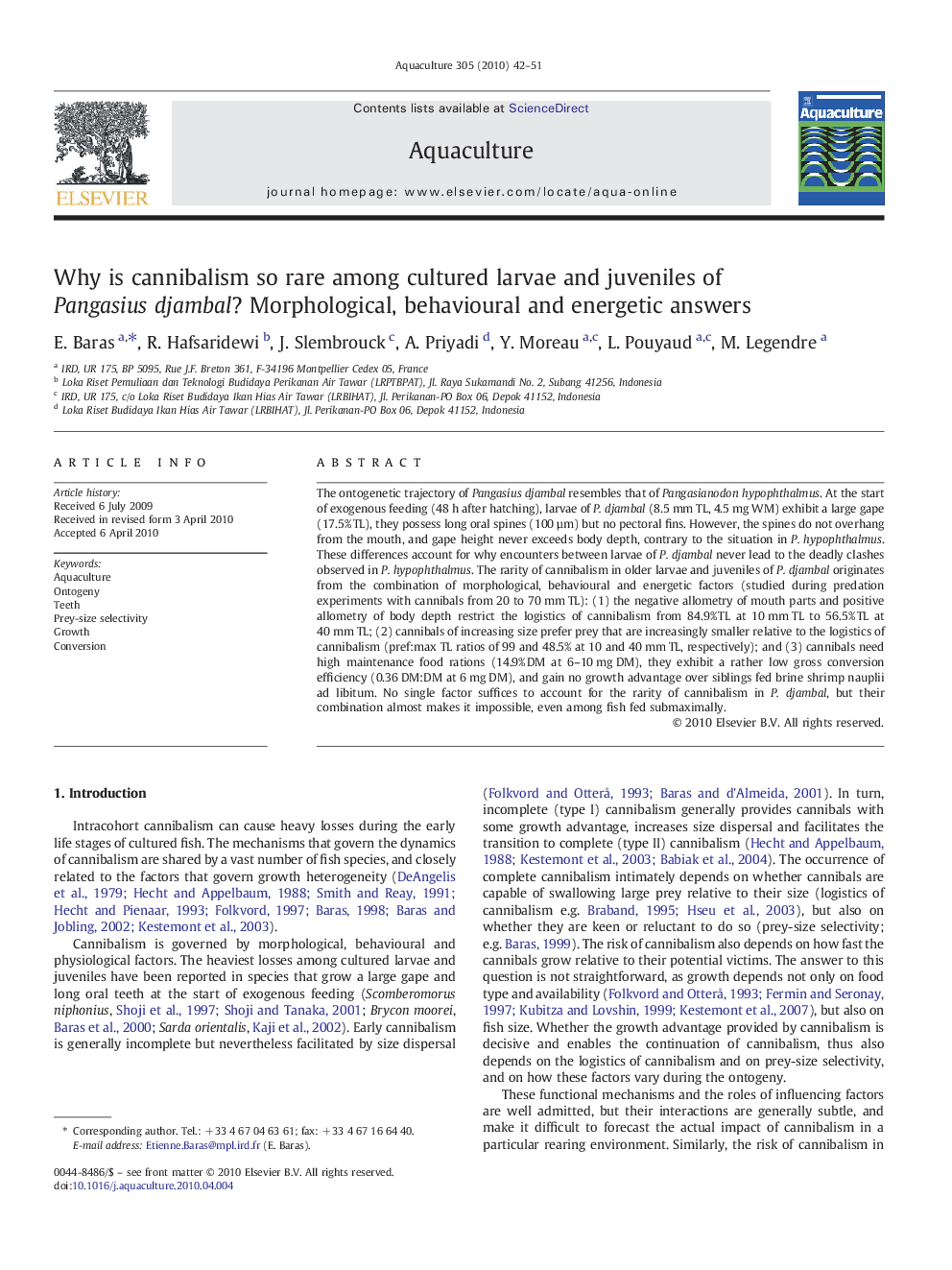| کد مقاله | کد نشریه | سال انتشار | مقاله انگلیسی | نسخه تمام متن |
|---|---|---|---|---|
| 2423526 | 1552923 | 2010 | 10 صفحه PDF | دانلود رایگان |

The ontogenetic trajectory of Pangasius djambal resembles that of Pangasianodon hypophthalmus. At the start of exogenous feeding (48 h after hatching), larvae of P. djambal (8.5 mm TL, 4.5 mg WM) exhibit a large gape (17.5% TL), they possess long oral spines (100 µm) but no pectoral fins. However, the spines do not overhang from the mouth, and gape height never exceeds body depth, contrary to the situation in P. hypophthalmus. These differences account for why encounters between larvae of P. djambal never lead to the deadly clashes observed in P. hypophthalmus. The rarity of cannibalism in older larvae and juveniles of P. djambal originates from the combination of morphological, behavioural and energetic factors (studied during predation experiments with cannibals from 20 to 70 mm TL): (1) the negative allometry of mouth parts and positive allometry of body depth restrict the logistics of cannibalism from 84.9% TL at 10 mm TL to 56.5% TL at 40 mm TL; (2) cannibals of increasing size prefer prey that are increasingly smaller relative to the logistics of cannibalism (pref:max TL ratios of 99 and 48.5% at 10 and 40 mm TL, respectively); and (3) cannibals need high maintenance food rations (14.9% DM at 6–10 mg DM), they exhibit a rather low gross conversion efficiency (0.36 DM:DM at 6 mg DM), and gain no growth advantage over siblings fed brine shrimp nauplii ad libitum. No single factor suffices to account for the rarity of cannibalism in P. djambal, but their combination almost makes it impossible, even among fish fed submaximally.
Journal: Aquaculture - Volume 305, Issues 1–4, 1 July 2010, Pages 42–51